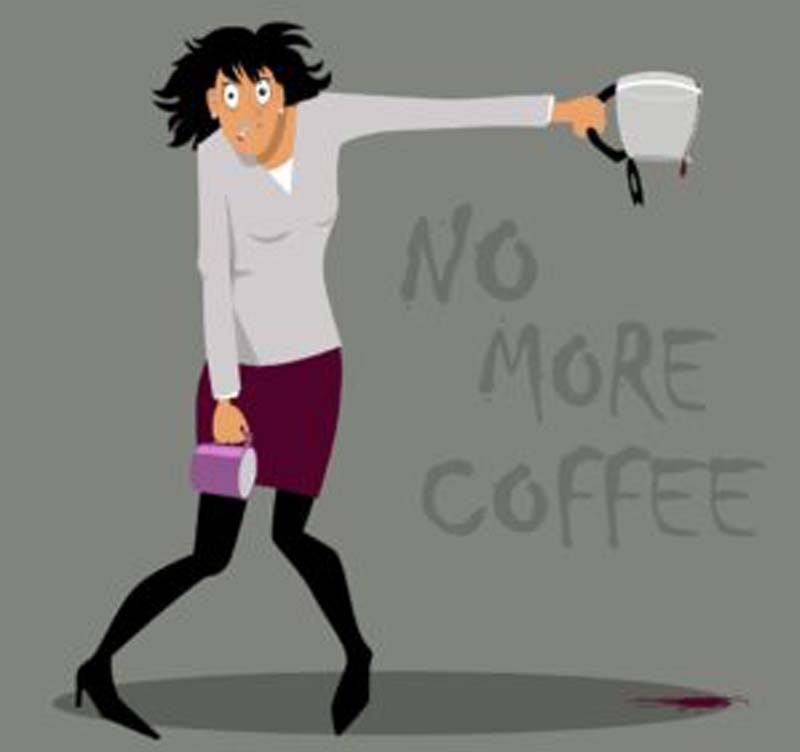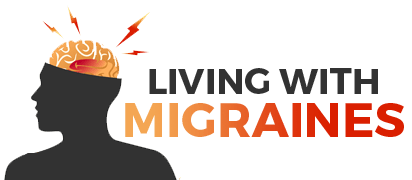
As migraine sufferers, we are acutely familiar with headache pain. We have become accustomed to self-diagnosing at every turn of our existence. However, the symptoms of a caffeine-induced withdrawal headache can sometimes be misread as a migraine, especially early on in the migraine cycle. Let’s review what the differences are and how to distinguish between the two.
Caffeine withdrawal will affect the majority of coffee drinkers at some point
If, for example, you are used to drinking three cups of coffee every day and you have being doing so for several years, chances are good that your body will not appreciate any deviation from that pattern. Suddenly then starting to drink one cup of coffee is likely to cause a caffeine withdrawal headache. If we seek to reduce caffeine consumption, then a gradual approach represents the best way to go.
The culprit behind the headache can be a change in our routine

Sometimes, as migraine sufferers, we are traveling or the day just gets away from us and we simply forget to drink our usual amount of coffee. It happens more often than we think. The next day, we therefore wake up with a blistering headache and, we think we are experiencing a migraine. Before we jump the gun and take migraine medication or try something else to abort the episode, we need to ensure that we are not experiencing caffeine withdrawal, which could simply be aborted with a regular amount of caffeine.
The location of a migraine and a caffeine withdrawal headache are similar
What are the symptoms of a caffeine withdrawal headache? It depends on the timing. The reason I say that is because in the beginning, the migraine usually starts as a faint headache on the right side. And a caffeine withdrawal headache can often appear in the same location as the migraine.
The top-right corner of our head is where both of these tend to appear. To find the location, place the tip of your index finger at the center of your right eyebrow, with the tip of your thumb at the center of your ear. Move only your thumb up two inches, without moving your index finger. The area between the tips of your fingers represents the general location that I am referring to.
We don’t have a lot of time to distinguish between the two
The more time that passes, the more difficult the migraine becomes and the less the two resemble each other. As migraine sufferers, we don’t want time to pass in order to see whether it is one or the other. The longer we wait, the more problematic it becomes to abort the migraine. That is not true with a caffeine withdrawal headache. With a caffeine withdrawal headache, we could just drink a cup of coffee and be done with it, in which case the headache pain would disappear within thirty minutes at most.
Some of you may be thinking, why not just drink some coffee and test? The obvious problem with this for many migraine sufferers is that excess caffeine can sometimes make the migraine pain worse. Are you confused yet? Yes, it is never that simple. Suffering from a migraine, the last thing many of us need to do is gulp down a cup of coffee.
How I distinguish between a migraine and a caffeine withdrawal headache
Most of us, after suffering from years of migraines, have no problem knowing when a migraine is about to occur. But, there are times when even the most experienced of us fail to do so.
So, before doing anything, I consult the journal to find out whether I may have deviated from my caffeine consumption the prior day. If I did, then the task at hand becomes easier. If the pattern does not appear to deviate, I ask the following questions to help distinguish between the two.
- Are any other symptoms present? As I alluded to, migraines tend to come with additional symptoms.
- If I move my head from side to side, does the pain increase? If the answer is yes, then in my case it is a migraine. When I am experiencing caffeine withdrawal, the throbbing pain is constant.
- How far down is the pain? The further down the pain, the more likely it is to be a migraine.
- Has the pain gradually been increasing? Again, with caffeine withdrawal, it tends to remain at the same level.
I should caveat by saying that this works for me. In your case, symptoms will most likely be different. Just make sure that you follow a process, like the simple questionnaire.
Conclusion
Early on, migraines and caffeine withdrawal headaches may appear similar. Distinguishing between the two at this time is crucial, since we don’t want to give the migraine any additional advantages to fester.
For those of us that are fine with caffeine absent a migraine, quickly review your history and symptoms to ensure you know which one you are dealing with. If this is done properly, the choice should become clear.
